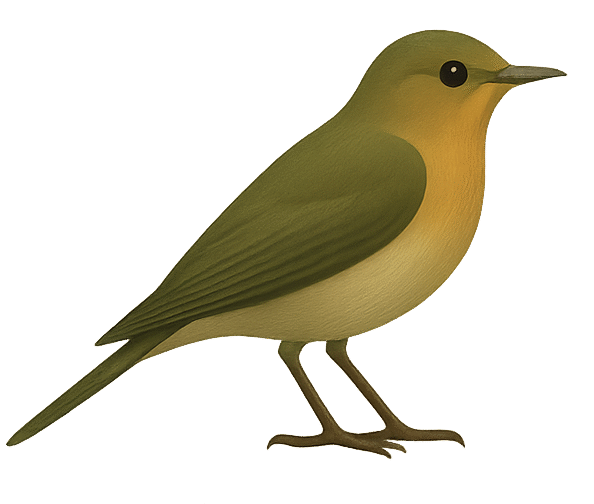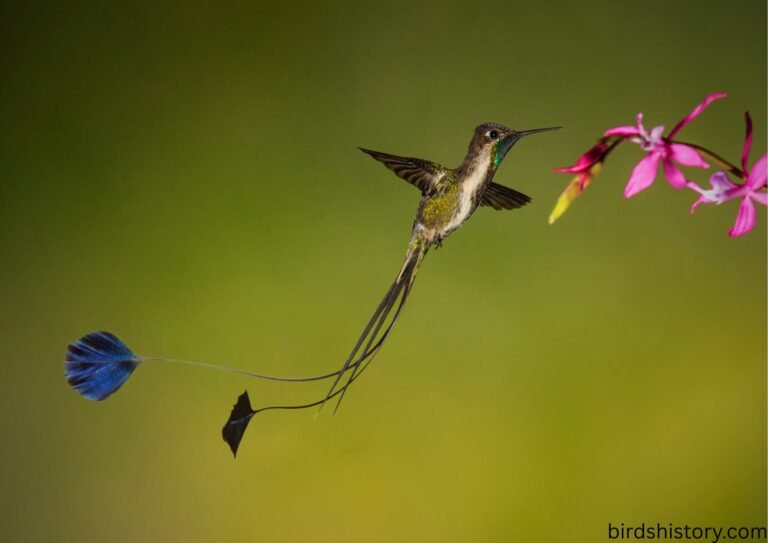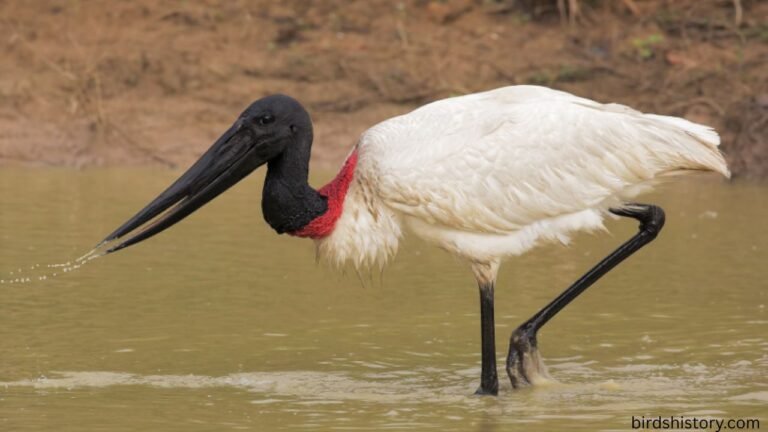The Atlantic Puffin: The Colorful Clown of the Sea
The Atlantic Puffin is one of the most charming seabirds in the world, often nicknamed the “clown of the sea” because of its brightly colored beak and playful personality. Found across the North Atlantic, from the icy waters of Iceland to the rocky coasts of Newfoundland, puffins are beloved by birdwatchers and travelers alike.
What makes them fascinating is the contrast between their lives at sea and on land. They spend most of their year out on the open ocean, diving for fish and braving rough waves. But every summer, they return to land in massive colonies to breed, filling cliffsides with their lively chatter.
A surprising fact? Despite their small, plump appearance, puffins are powerful fliers, beating their wings up to 400 times per minute to reach speeds of 55 mph. They are also exceptional divers, using their wings like flippers to swim underwater in search of fish.
Let’s explore everything about this remarkable seabird—from its physical traits and diet to its survival challenges and conservation efforts.
Taxonomy / Classification
- Common Name: Atlantic Puffin
- Scientific Name: Fratercula arctica
- Family: Alcidae
- Order: Charadriiformes
- Class: Aves
Also read: /southern-cassowary/
The Atlantic Puffin is part of the auk family (Alcidae), which includes other seabirds like guillemots, murres, and razorbills. The Atlantic Puffin is the only species of its kind found in the Atlantic Ocean, while its relatives, the Horned and Tufted Puffins, are native to the Pacific.
Physical Description
Atlantic Puffins are easily spotted due to their unique features and short, plump build.
Size and Build
- Height: About 10 inches (25 cm)
- Wingspan: 20–24 inches (50–60 cm)
- Weight: Around 1 pound (450 g)
Plumage
- Back and wings: Black
- Belly and chest: White
- The puffin’s face is a light gray color, with dark, triangular shapes around its eyes.
- Feet: Bright orange, webbed for swimming
Beak
Their most striking feature is the large, triangular bill, which turns bright orange, red, and yellow during the breeding season. In winter, it fades to a duller grayish color, making them less colorful outside the mating months.
Male vs Female
Males and females look almost identical. Males are usually slightly larger, but the difference is subtle.
Unique Trait
Their beak is not just for show—it is specially adapted to hold multiple fish at once. Puffins can carry 10–12 small fish crosswise in their beak, thanks to backward-facing spines on their tongue and upper palate.
Also Read About: /the-emperor-penguin/
Habitat and Range
The Atlantic Puffin lives in the cold waters of the North Atlantic Ocean.
Breeding Range
- Iceland: Home to the world’s largest population (over 60% of all puffins).
- Norway, Greenland, UK (Scotland, Wales), Ireland: Strong colonies.
- Eastern Canada (Newfoundland and Labrador): Another major breeding ground.
- Maine, USA: The southernmost breeding colonies.
Habitat Preference
- During breeding: Rocky cliffs and grassy slopes near the sea.
- Outside breeding: Open ocean, often hundreds of miles offshore.
Migration
After the breeding season, puffins migrate to sea and spend the rest of the year scattered across the North Atlantic, rarely coming to land until the next summer.

Diet and Feeding Habits
Puffins are carnivorous seabirds that mainly consume small fish.
Primary Diet
- Sand eels
- Herring
- Capelin
- Sprat
Hunting Technique
- Puffins dive underwater using their wings like flippers and their feet as rudders.
- They can dive as deep as 200 feet (60 meters).
- They catch several fish in one dive, holding them crosswise in their beak while still hunting for more.
Interesting Feeding Behavior
Their ability to carry multiple fish makes them standout providers for chicks. A single trip can supply a chick with up to 20 small fish.
Behavior and Lifestyle
Atlantic Puffins are both social and adaptable, with unique behaviors on land and at sea.
Social Habits
- Puffins nest in large colonies that can number in the tens of thousands.
- When they are out at sea, they can be found either alone or in small gatherings.
Flight Style
- Despite their small wings, puffins are fast fliers.
- They need to run across the water to take off, then beat their wings rapidly (up to 400 beats per minute).
Nesting Habits
- Puffins dig burrows in soil or use rocky crevices.
- They line the nest with grass, feathers, and seaweed.
Vocalizations
- When they are on land, puffins produce a growling, grunting sound that people often say sounds like a chainsaw.
- At sea, they are generally silent.
Mating Rituals
- Puffins are monogamous, and they typically pair up with the same partner for life, reuniting each year.
- They engage in “billing” (rubbing beaks together), which strengthens pair bonds and is often observed in large colonies.
Reproduction and Lifespan
Atlantic Puffins have a low reproductive rate, which makes their survival more vulnerable to environmental threats.
Breeding Season
- Occurs between April and August.
- Puffins tend to come back to the same nesting site every year.
Egg and Chick
- Females lay one egg per season.
- The egg is white and slightly speckled.
- Both parents take turns incubating the egg for about 40–45 days.
- After the baby puffin, called a “puffling,” is born, it eats small fish for roughly six to eight weeks.
Fledging
- When it’s around six weeks old, the young puffin leaves its nest at night and makes its way to the ocean by itself.
- Parents do not guide the chick—its survival depends entirely on instinct.
Lifespan
- In the wild: 20–25 years.
- Some puffins have been recorded living over 30 years.

Predators and Threats
Although puffins are skilled survivors, they face predators both on land and at sea.
Natural Predators
- Gulls pose a danger to puffins by preying on their eggs, chicks, and the fish they catch.
- Skuas and Ravens: Attack colonies.
- Foxes and Rats: Threaten colonies where mammals have been introduced.
- Seals: Occasionally prey on puffins at sea.
Environmental Threats
- Climate Change: Warmer waters reduce fish stocks, making food scarce.
- Overfishing: Humans compete for the same fish puffins rely on.
- Pollution: Oil spills and plastic waste threaten seabirds worldwide.
Conservation Status
The Atlantic Puffin is currently classified as Vulnerable on the IUCN Red List, which means it is at a high risk of going extinct in the wild.
Population
- Estimated global population: About 12 million birds.
- Declining in some regions due to food shortages and climate change.
Conservation Efforts
- There are designated safe breeding locations for them in the UK, Iceland, and Canada.
- Reintroduction projects in places like Maine, where puffins were once extinct but have now made a comeback thanks to programs like Project Puffin.
- Marine protected areas help safeguard food sources.
Interesting Facts about Atlantic Puffins
- Their nickname is “sea parrots” because of their colorful beaks.
- Puffins have the ability to hold as many as 10 to 12 fish in their beak at one time.
- They spend about 8 months of the year at sea, only returning to land to breed.
- Puffins can use their wings to both fly in the sky and to “fly” underwater.
- Chicks leave the nest alone at night and head straight to the sea.
- They are considered symbols of joy and playfulness in many cultures.
- In Iceland, puffins are also part of traditional cuisine.
- The Atlantic Puffin holds the distinction of being the official bird for Newfoundland and Labrador, Canada.
- Their beaks actually glow under UV light.
- Puffins often live in the same burrow for decades.
Conclusion
The Atlantic Puffin is one of the most endearing seabirds in the world. With its colorful beak, unique behaviors, and fascinating life cycle, it captures the imagination of anyone who sees it. But beyond its charm, the puffin is also a symbol of the fragile balance of marine ecosystems. Its reliance on fish stocks and healthy oceans makes it a vital indicator of environmental change.
Protecting the Atlantic Puffin means protecting our oceans—and ensuring that future generations can continue to admire the clown of the sea soaring above cliffs and diving beneath waves.

FAQs
1. How big is an Atlantic Puffin?
About 10 inches tall with a wingspan of 20–24 inches.
2. Why do people refer to puffins as “clowns of the sea”?
Because of their colorful beaks and expressive faces.
3. Where can I see puffins?
Iceland, Norway, the UK, Ireland, Canada, and Maine.
4. Do puffins mate for life?
Yes, the majority of puffins are monogamous and tend to return to the same mate each breeding season.
5. How many eggs does a puffin lay?
Just one egg per breeding season.
6. What do puffins eat?
Small fish like sand eels, herring, and capelin.
7. How long do puffins live?
Typically 20–25 years in the wild.
8. Are puffins endangered?
They are listed as Vulnerable due to climate change and overfishing.
9. Do puffins migrate?
Yes, they spend most of the year at sea and only come to land for breeding.
10. Can puffins fly?
Yes, puffins are strong fliers, reaching speeds of 55 mph despite their small wings.







